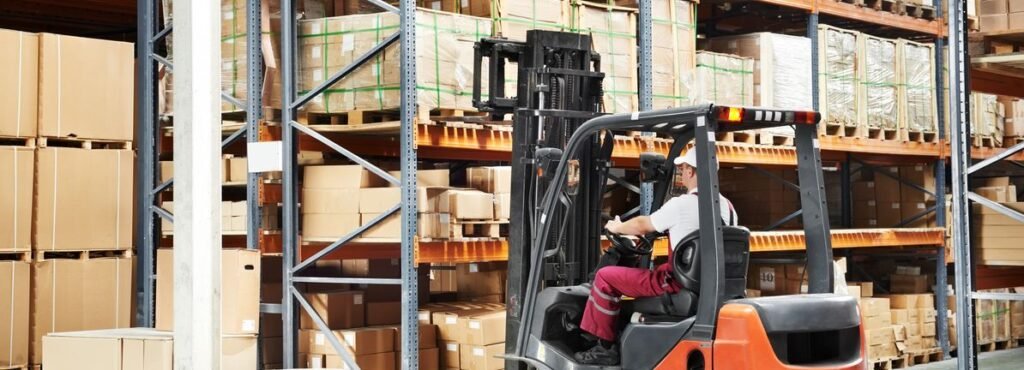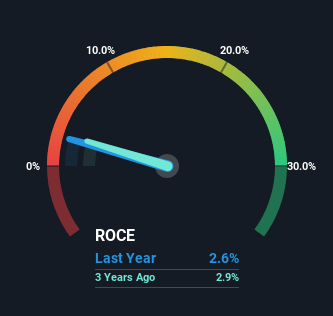If we’re looking to avoid a business that is in decline, what are the trends that can warn us ahead of time? A business that’s potentially in decline often shows two trends, a return on capital employed (ROCE) that’s declining, and a base of capital employed that’s also declining. Basically the company is earning less on its investments and it is also reducing its total assets. On that note, looking into Hiap Tong (Catalist:5PO), we weren’t too upbeat about how things were going.
What Is Return On Capital Employed (ROCE)?
For those who don’t know, ROCE is a measure of a company’s yearly pre-tax profit (its return), relative to the capital employed in the business. Analysts use this formula to calculate it for Hiap Tong:
Return on Capital Employed = Earnings Before Interest and Tax (EBIT) ÷ (Total Assets – Current Liabilities)
0.026 = S$3.7m ÷ (S$204m – S$61m) (Based on the trailing twelve months to March 2024).
Therefore, Hiap Tong has an ROCE of 2.6%. In absolute terms, that’s a low return and it also under-performs the Trade Distributors industry average of 5.8%.
Check out our latest analysis for Hiap Tong
While the past is not representative of the future, it can be helpful to know how a company has performed historically, which is why we have this chart above. If you’re interested in investigating Hiap Tong’s past further, check out this free graph covering Hiap Tong’s past earnings, revenue and cash flow.
The Trend Of ROCE
In terms of Hiap Tong’s historical ROCE movements, the trend doesn’t inspire confidence. About five years ago, returns on capital were 3.5%, however they’re now substantially lower than that as we saw above. Meanwhile, capital employed in the business has stayed roughly the flat over the period. Since returns are falling and the business has the same amount of assets employed, this can suggest it’s a mature business that hasn’t had much growth in the last five years. So because these trends aren’t typically conducive to creating a multi-bagger, we wouldn’t hold our breath on Hiap Tong becoming one if things continue as they have.
On a side note, Hiap Tong’s current liabilities have increased over the last five years to 30% of total assets, effectively distorting the ROCE to some degree. Without this increase, it’s likely that ROCE would be even lower than 2.6%. Keep an eye on this ratio, because the business could encounter some new risks if this metric gets too high.
The Bottom Line On Hiap Tong’s ROCE
All in all, the lower returns from the same amount of capital employed aren’t exactly signs of a compounding machine. Investors must expect better things on the horizon though because the stock has risen 34% in the last five years. Regardless, we don’t like the trends as they are and if they persist, we think you might find better investments elsewhere.
One more thing to note, we’ve identified 2 warning signs with Hiap Tong and understanding them should be part of your investment process.
While Hiap Tong isn’t earning the highest return, check out this free list of companies that are earning high returns on equity with solid balance sheets.
Have feedback on this article? Concerned about the content? Get in touch with us directly. Alternatively, email editorial-team (at) simplywallst.com.
This article by Simply Wall St is general in nature. We provide commentary based on historical data and analyst forecasts only using an unbiased methodology and our articles are not intended to be financial advice. It does not constitute a recommendation to buy or sell any stock, and does not take account of your objectives, or your financial situation. We aim to bring you long-term focused analysis driven by fundamental data. Note that our analysis may not factor in the latest price-sensitive company announcements or qualitative material. Simply Wall St has no position in any stocks mentioned.


